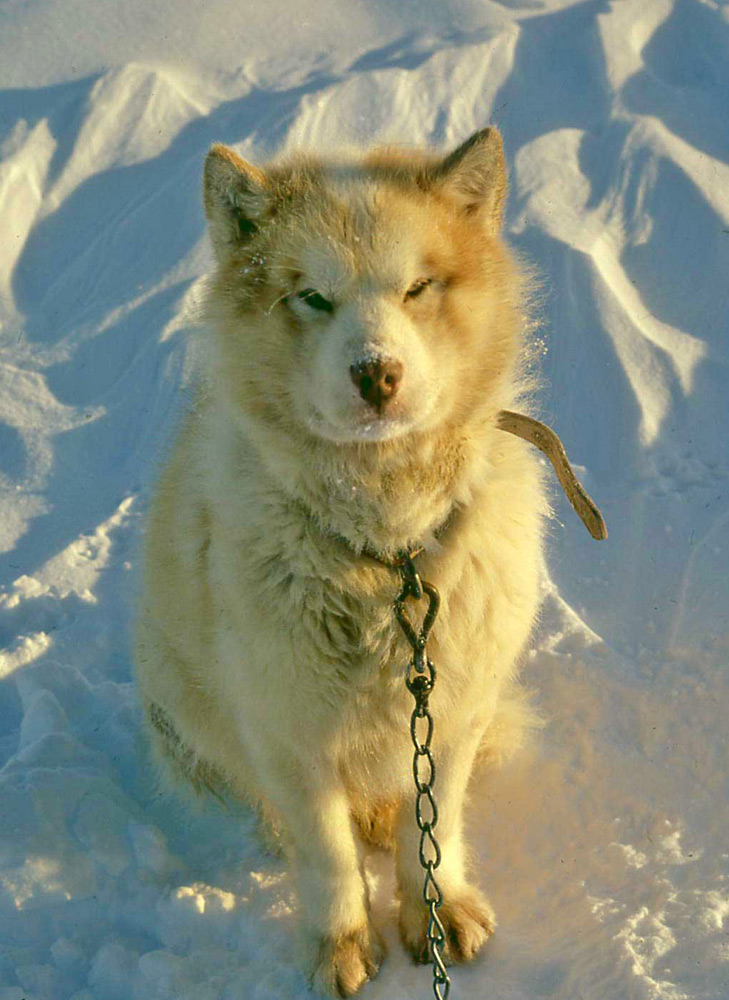Briggs - Antarctic Husky
Briggs (brother to Stratton!*) was my heaviest dog and
pulled in the back pair, closest to the sledge. When unfit
he weighed in about 120 lbs which dropped to about 105-110
when he had run off some of his fat! He's not long off base
in this shot hence the remains of some blubber attached
to his fur. A complete escape artist he was capable of contorting
his lower jaw enough to chew through his own collar.
*Briggs and Stratton are a British the manufacturers of small
engines particularly used in lawnmowers though the latter
are uncommon in Antarctica.
Huskies were used in Antarctica for a little under a hundred years. They were first used for transport during the Southern Cross expedition under Carsten Borchgrevink 1898 -1900. In the early years, they were the only form of transport other than foot, as the 20th Century progressed, so more effective and more reliable mechanized transport became available. For a long time these motor vehicles were only really trustworthy on relatively flat, smooth surfaces and even then a gifted mechanic nearby was often a necessity.
Dog sleds remained until well into the 1970's as a required transportation solution. They were much more flexible than motor vehicles available at the time, considerably lighter (for travelling across crevassed regions or sea-ice) and could cope with the broken up / fractured terrain often encountered in Antarctica better than the early tracked vehicles.
They were kept, initially as a back-up for mechanized transport and then later when not required for this, for "recreational" purposes. Many generations of Antarctic personnel on scientific bases regarded their experiences in Antarctica as being greatly enhanced by the presence of the dogs and the possibility of sledging trips with them.
In 1991, the fear that distemper from dogs could spread to seals and the impact they could have on wildlife if they escaped led to a new clause in the Antarctic Treaty.
"Dogs shall not be introduced onto land or ice shelves and dogs currently in those areas shall be removed by April 1 1994".
The last dogs were removed from Antarctica on Feb 22nd 1994. All that remains of these most loyal of man's companions in the most extreme place on earth is their history and photographs.
If you think about it, as Amundsen used dog sleds to reach the South Pole and his sled was being pulled by dogs at the time, dogs even reached the South Pole momentarily before the first man did!
Photo credit - Drummond Small

